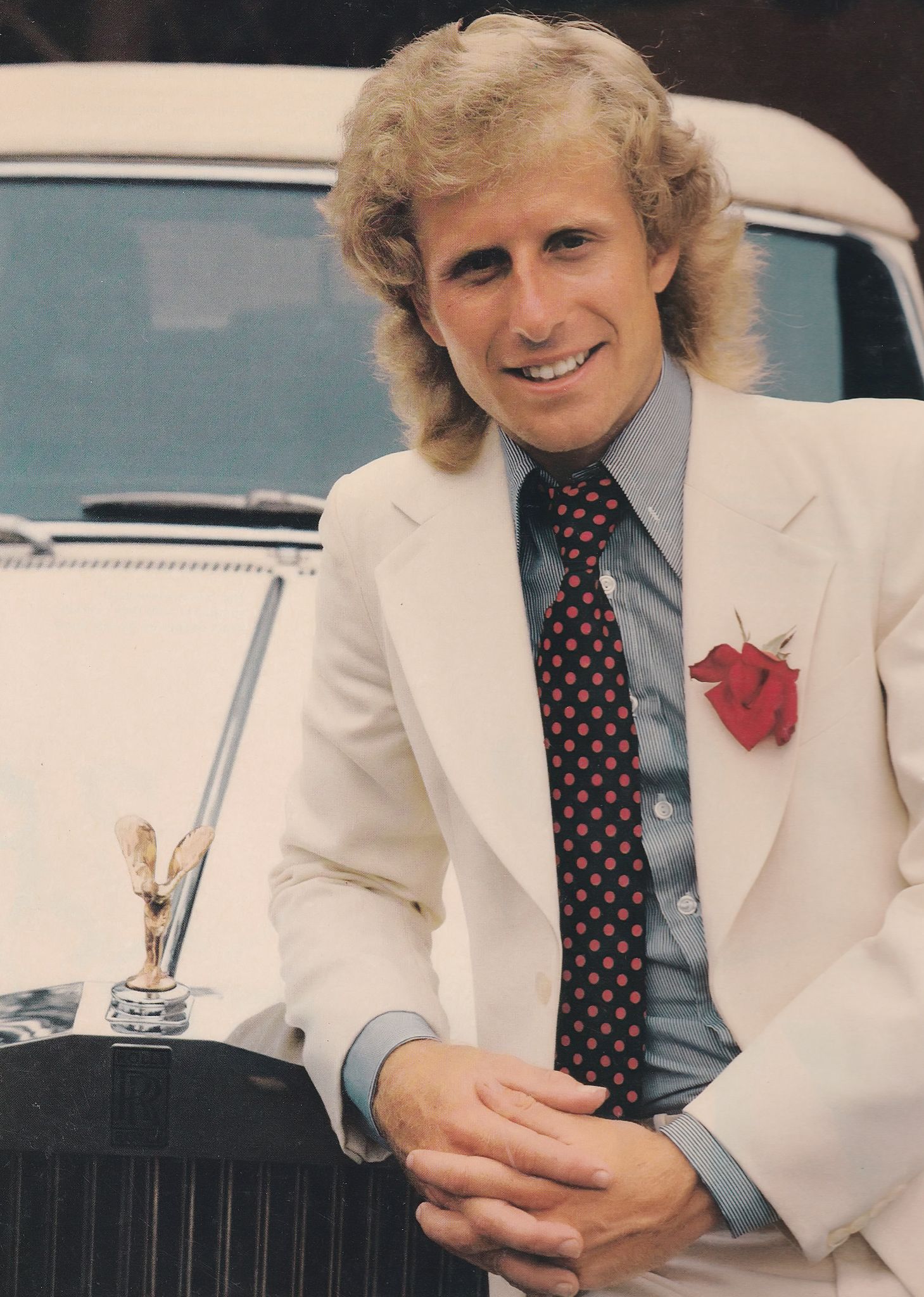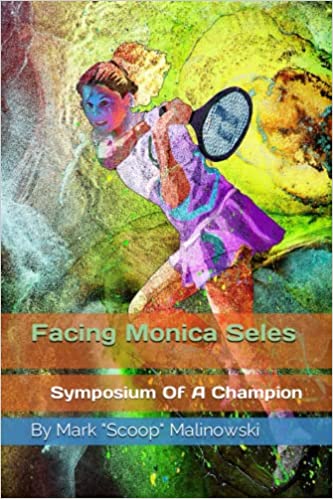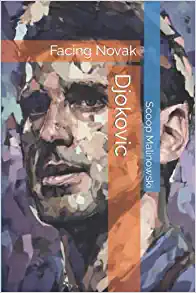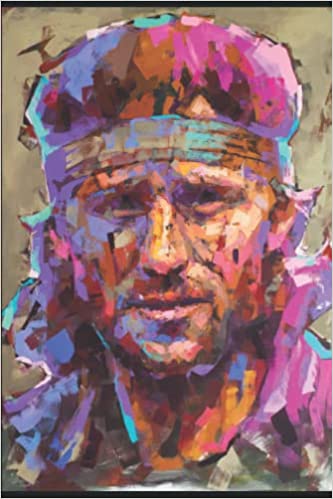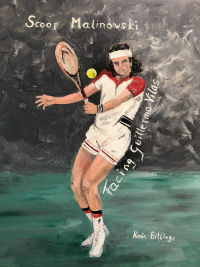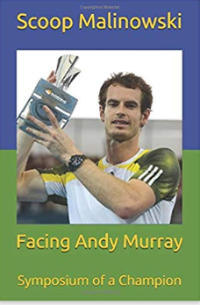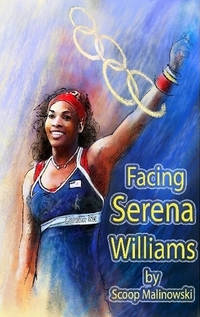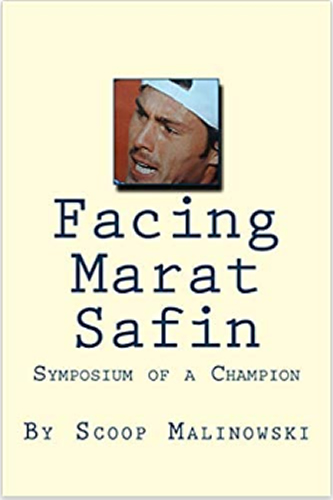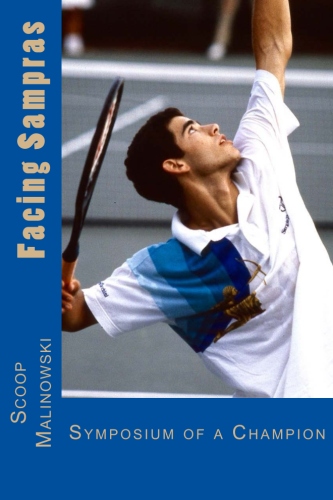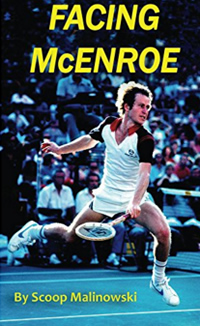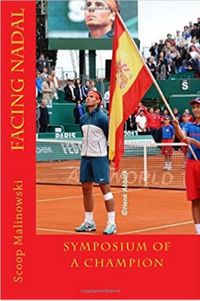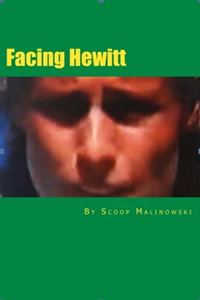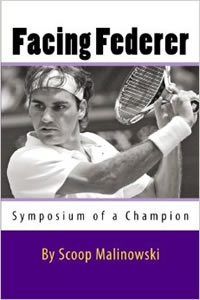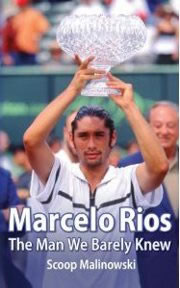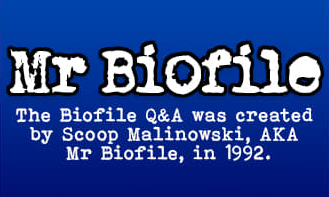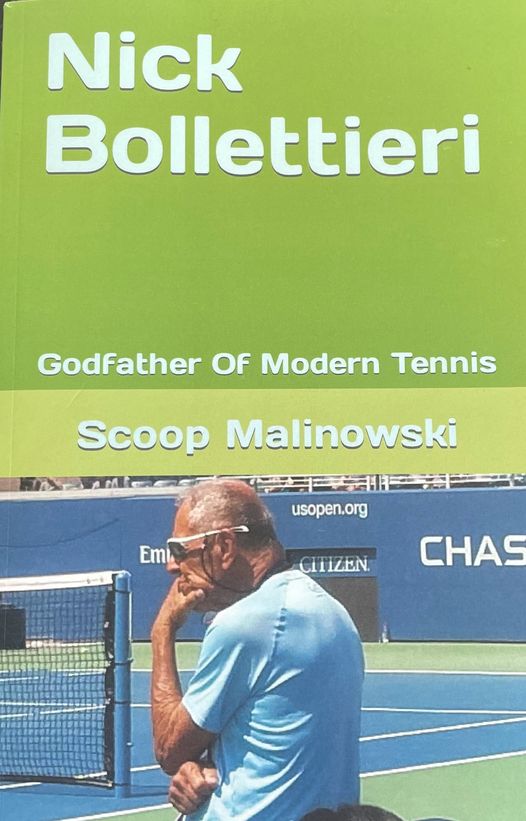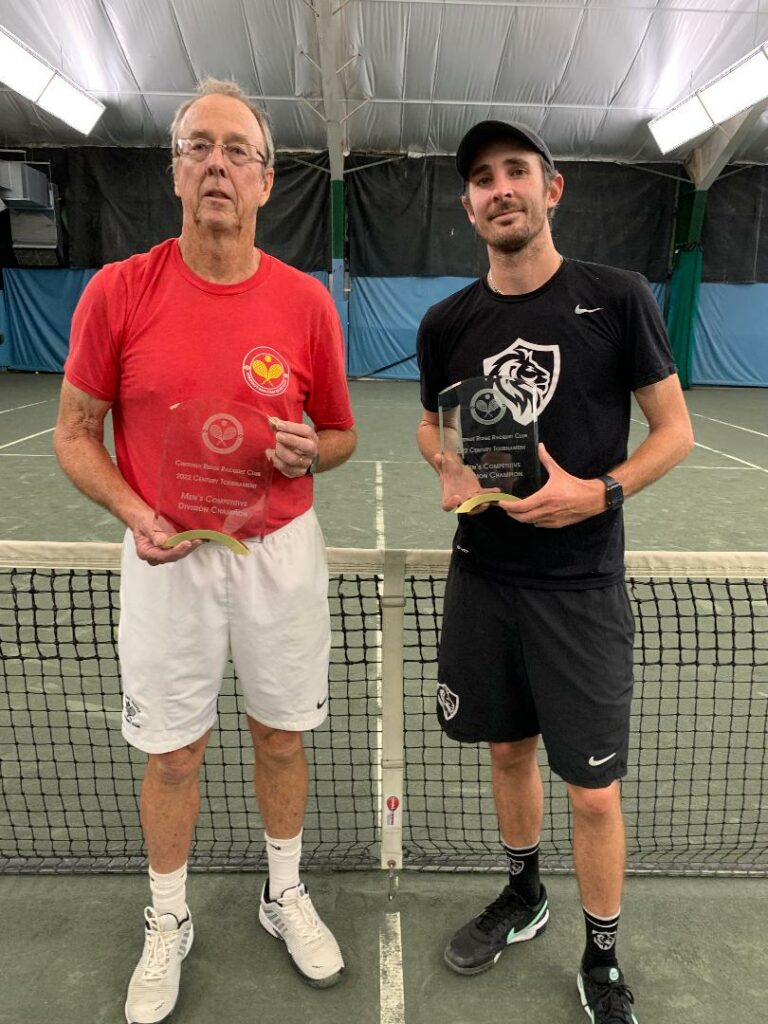
By Scoop Malinowski
The name John James is famous on the USTA Eastern tennis circuit. Numerous times over the years various players have asked me if I ever played him. Not only did we never play, I never had the fortune to meet him – until a couple of weeks ago.
Now a teaching pro at Chestnut Ridge Racquet Club in Mount Kisco, NY, where he’s worked for decades, John James has some big time credentials, including an ATP win over Bjorn Borg in 1974…
At the age of 20 John began a career as a touring professional that lasted 10 years. During that time he played all the Grand Slams several times and was ranked among the top 100 singles player in the world. He also won several tour doubles, notably reaching the Australian Open doubles semi-finals in 1979. At the age of 30 he retired to a teaching position, but continued to compete in Eastern and National tournaments. In 1986, he was ranked #1 Nationally in Men’s 35 singles. One of his most notable achievements in Eastern tournament play was winning 18 straight Eastern Masters Tournaments over a 4-year period from 1986-1989. The winning streak consisted of over 75 matches.
Two weeks ago I played a “Century Doubles” tournament at his club and though myself and RD Ferman didn’t play against the legend himself, we did meet, in a roundabout way. I saw an old Volkl Tour 8 racquet from the early 2000s on a table and asked who was using my former favorite and now obsolete racquet? “John James,” was the answer. So when I approached him later to chat about our common racquet, his friendly kindness inspired the idea to do an interview with him about his career.
Of his most illustrious victory against Borg James only remembers one point in the match. “I only remember the last point of the match,” recalls James, now 71 and still a very strong UTR 9 player. “It was a long time ago in Sydney, in the lead up to the Australian Open, end of 1974. I forget if it was end of ’74 or early ’75. That tournament I beat Paul McNamee in the first round 76 76. That same day I played Borg, who had a bye and didn’t play a match that same day. The score was 64 53, up 40-15, I served wide to his forehand and he missed the return into the net. He was ranked no. 4 in the world then, he won Wimbledon for the first time the next year (1976). When he played me in Sydney his grass court tennis wasn’t there yet. At Australian Open 1974 he lost to Phil Dent in the third round.”
“I also played Borg at Forest Hills, the last year on clay (1977) before the tournament moved to Flushing Meadows. He won 75 64. It was a whole different match playing him on clay and not grass. He had a sore shoulder that tournament and in the fourth round he defaulted. When he played me he was serving three quarters speed. I remember thinking if I can win the first set he couldn’t continue.”
When asked what the greatest moment of his tennis career was, the 6-1, 175 pounder who accomplished a 95-145 match record in ATP singles, paused to contemplate… “I don’t know if I have a good answer to that. I was a consistent player, always ranked around 100 (career best was no. 81 in 1979), in doubles I was ranked around 50-60. I didn’t have a lot of high points. I beat the people I was expected to and usually lost to the higher ranked players. I played the final of Newport in 1978 and lost to Bernie Mitton 8-6 in the third set tiebreaker (16 63 67). I had two match points. I was serving at 6-4. That week I beat Tim Wilkison, Tom Gullikson, Victor Amaya.”
In the Amaya match, James survived being a set down and 3-5 down, love-40 on Amaya’s serve on grass but escaped to score the win.
“I also won a teaching pro tournament in Newport for good money in 1986, sponsored by Reebok. There was 16 regional tournaments with big draws and then the final draw was played in Newport.”
James also encountered Jimmy Connors twice. “I played him in North Conway (1975), New Hampshire when I was a couple years on the tour. He was number one in the world then. He won 63 63 (actually 75 63). His shots were so accurate. Every ball he hit was so clean. I think I played good. It was one of those matches you come off the court and say I played okay but you got beat.”
“Then we played in Tulsa, Oklahoma (April 1979) in an evening match. He was no. 2 in the world then. The temperature was 40 degrees and there was a gale blowing 40 miles an hour. It was horrible conditions, night match, only about 20 people were watching because the weather was so bad. I had multiple opportunities, break points, one of those matches I kind of let slip away (76 63).”
James battled John McEnroe twice in 1979, first at Queens Club, losing on grass 63 36 26, when the iconic American was ranked 4 in the world at age 20. Then less than two months later in South Orange on clay, James was beaten by McEnroe again on clay 26 46.
James does hold a win vs McEnroe though, it happened on Long Island. “I beat him when he was a junior in the Eastern Hard Courts (1975). I was 24, he was 16. I won in straight sets. Two years after he made that semifinal run at Wimbledon (1977). When I played him in the Eastern Hard Courts, he was just this kid who showed up for the final. I have no recollection of the match, I just remember I played well. That’s the problem when you play so many matches. If you lost early in a tournament, you would try to find another money tournament that week and play it. I played thousands of matches. It occurred to me later when he got to the semifinals of Wimbledon that it was the same kid, he got really good in those two years.”
In all three matches, James never witnessed any signature McEnroe tantrums or eruptions. “Nothing at all in the first match when he was a kid. In Queens we played three sets, he didn’t do anything crazy. And when he beat me in South Orange, he was in full control.”
Having played Borg, McEnroe, Connors, Vilas, and Lendl, the one who impressed James the most with the “wow factor” was Jimbo. “Wow… Jimmy did that to me. He hit the ball so clean. His shots were so accurate. He just looked great. Borg was very athletic and fast on the court because he was so quick. Lendl and Vilas were physically in such good shape, they worked so hard. But there was nothing really “wow” about them. Connors, I think, hit the ball the nicest. McEnroe – the serve was so different, so difficult to read. And he had so much touch and feel around the net. Certain things he did phenomenally well, serving and his touch. The rest of his game was not as impressive.”
James and Laver did cross paths once on the court, only in practice. “I tell this story. When I worked at another club in Mount Kisco – I was 36 or 37 – they had a Masters event with Laver, Rosewall, Mal Anderson. I practiced with Laver on indoor clay. I was in good shape. Laver and I played a set. On the court there was a spot around the baseline on one side that had a little dip and if you got your shot there, it would stay low. I got quite a lot of shots there. He said on one changeover, ‘There’s a bit of a dip.’ Yeah. ‘I’ll have to get used to that.’ He didn’t complain. He wanted to get used to that dip. To him it was a problem that needed to be solved. I wished I heard that ten years earlier.”
The very best James ever felt on a tennis court actually came at the very end of his career. “After I stopped playing the tour, I still had a few points. When my daughter was nine months old my wife and I took her down to Australia to visit my parents. I played Adelaide (1982) because I had enough points to play qualies. I beat Henri Leconte (in qualies). I beat Tim Wilkison, I didn’t miss a volley. I made the semis (lost to Rod Frawley).”
In the 1990s, James had an opportunity to coach a 16 year old Lleyton Hewitt in the summer 1997 in the United States when Hewitt was trying to move up the rankings. “Lleyton is from my hometown Adelaide. A player on my high school team was his longtime coach, Peter Smith. Since I’m from Adelaide, someone from the federation called me to say a young guy is coming over to play Challengers and he needs a coach to travel with him. I had just started a junior tennis program. I wasn’t able to do it for a couple of weeks. So that didn’t work out. He’s probably lucky that it didn’t work out, I would have told him to come to net more [chuckles].”
Ken Rosewall announced his retirement in 1978 before the Washington DC summer tournament and James played a role in the grand finale of “Muscles.” “The week after I played the Newport final, I played Ken Rosewall in the first round of Washington. He had announced his retirement. The tournament had a ‘Ken Rosewall Night.’ I’m the guy who played him on ‘Ken Rosewall Night.’ I did everything right I guess, I lost 64 62 but I gave him a good match.” The 44 year old Rosewall, still ranked no. 18 at the time, ended up playing a couple more years. (Ken’s last ATP match would be in October 1980 in Melbourne, two weeks before his 46th birthday, a round of 16 loss to world no. 43 Paul McNamee 60 63.)
James continues to play a stunning level of high quality tennis today. He and partner Brad Maisey, also a teaching pro at the club, won the Chestnut Ridge Century Doubles tournament after losing the first set 6-2 to Rodrigo Latorraca and Bill Stanley. A large crowd packed in to watch the spectacular doubles duel starring a humble, popular legend of the sport who actually once managed to share a court and conquer John McEnroe and Bjorn Borg.
——————————————–
Postscript: After reading this article Bill Stanley emailed me: “I am even more impressed with John after reading this. And you could have mentioned there is not a nicer guy around.”
John James John McEnroe Bjorn Borg ATP Chestnut Ridge



